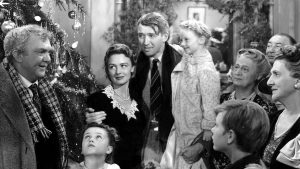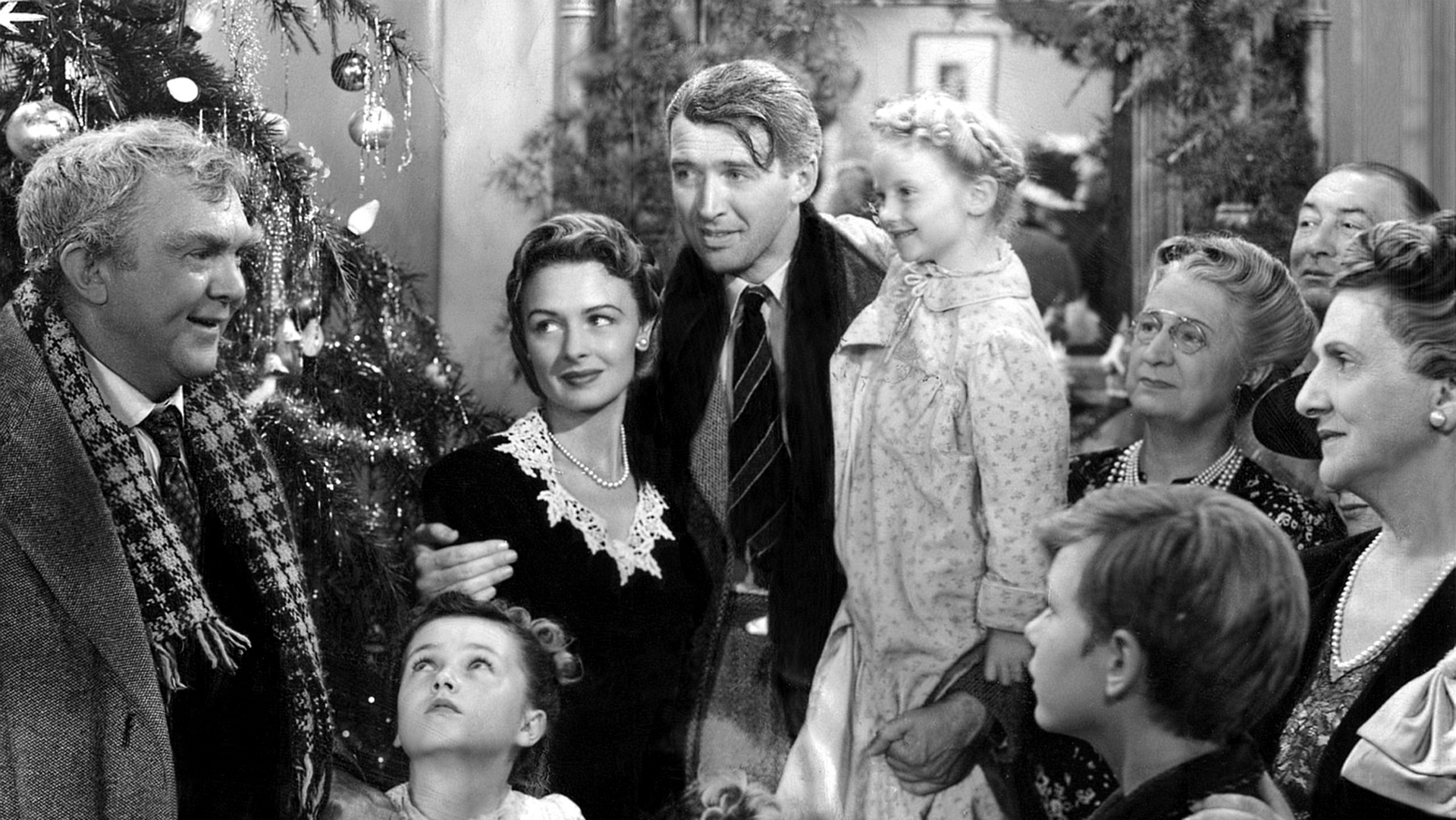
This is a wonderful and glorious season. Only the human spirit could take the coming and descent of winter and whip it into a festival of joy, family and love. For those of us that attach spirituality to the weeks leading up to Christmas the feeling heightens. Every year I sit down with my family and launch the season with a screening of the emerging classic, “Love Actually”.
It’s been 70 years since the premiere of Frank Capra’s “It’s a Wonderful Life” in New York, and each holiday season since, people from all around the world have recognized the film as an inspiration during Christmas time. I know I do.This year “It’s A Wonderful Life” screened at my local community theatre. All shows where sold out. It constantly amazes me that in it’s 70th year of existence this classic can still drill down on the simple truth of the season.
“It’s a Wonderful Life” is based on “The Greatest Gift,” a 1939 short story written by Philip Van Doren Stern. After spending several years trying to sell his story to publishers with no success, Stern self-published his work and sent it to 200 friends as a 21-page Christmas card in 1943. RKO Pictures wound up getting a hold of “The Greatest Gift” and bought the rights to the story with Cary Grant pegged as the star. As they tend to do in Hollywood, things fell through and the project languished before acclaimed director Frank Capra came on board in 1945 and named Jimmy Stewart as his leading man in the role of suicidal do-gooder, George Bailey. Jean Arthur, Olivia de Havilland, Ann Dvorak and Ginger Rogers, who called the character “too bland,” were all said to be in the running for the role of Mary Hatch Bailey. Donna Reed, an actress who went on to become the ultimate upper-middle-class TV housewife, ultimately secured the role.
One would thing that given both its status and enduring watchability, “It’s a Wonderful Life” would have been embraced by both critics and the public alike immediately after its release. In December of 1946 that was not the case .The film received generally mixed reviews however, it did receive five Academy Award nominations but ended up winning none. It also could be called box-office flop, failing to recoup its $3.7 million cost . It was a a disappointment. Out of the 400 films released in 1947, it was technically released on Dec. 20, 1946, so that it could be considered for the Academy Awards but went into general release on Jan. 7, 1947, “It’s a Wonderful Life” placed 26th in box office revenues, one spot ahead of another Christmas classic, “Miracle on 34th Street.” I imagine that after World Wad 2 this often depressing dark tale was not what war weary audiences were looking for.
In the decades after its initial release, “It’s a Wonderful Life” became a lost treasure only to re-emerge on the scene and receive some serious exposure during the 1970s and ’80s when it began appearing, somewhat relentlessly, on television during the holiday season. In 1990, the 45-year-old film was given the title “culturally, historically, or aesthetically significant” by the Library of Congress. The movie was back and it was here to stay.
In addition to getting rejected by many critics and moviegoers in the late 1940s, “It’s a Wonderful Life” received an official mark of disapproval from the FBI, which pegged the poignant film as Communist propaganda thanks to its populist themes and, more specifically, unflattering portrayal of big-city bankers.
Reads a section of a 1947 FBI memo titled “Communist Infiltration of the Motion Picture Industry”:
With regard to the picture “It’s a Wonderful Life”, stated in substance that the film represented rather obvious attempts to discredit bankers by casting Lionel Barrymore as a “scrooge-type” so that he would be the most hated man in the picture. This, according to these sources, is a common trick used by Communists. In addition, stated that, in his opinion, this picture deliberately maligned the upper class, attempting to show the people who had money were mean and despicable characters…..that if he made this picture portraying the banker, he would have shown this individual to have been following the rules as laid down by the State Bank Examiner in connection with making loans. Further, stated that the scene wouldn’t have “suffered at all” in portraying the banker as a man who was protecting funds put in his care by private individuals and adhering to the rules governing the loan of that money rather than portraying the part as it was shown. In summary, stated that it was not necessary to make the banker such a mean character and “I would never have done it that way.” Despite the FBI suspicions, Frank Capra and the film’s screenwriters were not among those blacklisted in 1947 by Hollywood as a result of the work of the House Un-American Activities Committee (HUAC).
I will close with a quote from the movie’s director Frank Capra, which I think sums up the intent of this enduring movie.
Someone should keep reminding Mr. Average Man that he was born free, divine, strong; uncrushable by fate, society, or hell itself; and that he is a child of God, equal heir to all the bounties of God; and that goodness is riches, kindness is power, and freedom is glory. Above all, every man is born with an inner capacity to take him as far as his imagination can dream or envision-providing he is free to dream and envision.
Frank Capra
I want to wish all of your a Merry Christmas and a Blessed New Year. Thanks for reading.

